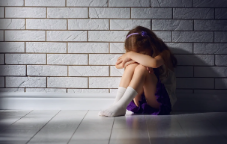When a death or loss occurs, it can be hard to know how to help our kids. We might be experiencing our own difficult emotions and we may be caring for other adults who are grieving. It’s important that we address grief and loss as a normal part of the human experience and help our kids process the experience.
Here are six helpful guidelines:
1. It’s best to use clear and understandable language and avoid euphemisms such as “passed away, gone, moved on, resting in peace.”
2. Be honest about your own feelings. Children see and feel our emotions and it can be confusing for them when we don’t explain what we’re feeling.
3. It’s OK to let children know when you are not sure and don’t have an answer. Sometimes, saying “How are you feeling?” and allowing them the space to express their feelings is more helpful than an answer.
4. Regressions are normal. “Acting out,” toileting issues, and fearfulness are some of the ways children may express grief.
5. Expect developmentally appropriate questions. Preschool age children may not understand the permanence of death. Reassure children by talking about the many people in their lives who are here to love and care for them.
6. Expect children to revisit the loss days, weeks, and months later– just as adults do.
References:
Ehmke, R. (2021, November 17). Helping children deal with grief. Child Mind Institute. Retrieved October 6, 2022, from https://childmind.org/article/helping-children-deal-grief/
Lissienko, K. (2011, September 13). Bereavement reactions of children & young people by age group. KidsHealth NZ. Retrieved October 6, 2022, from https://www.kidshealth.org.nz/bereavement-reactions-children-young-people-age-group

